The Safety Divide: Who’s Most Concerned About Public Figures in Today’s Political Climate?
August 20, 2024


As we approach the 2024 election, the race is proving to be closer and more unpredictable than ever. With voters divided and a significant portion still undecided, the outcome is anyone’s guess. Let’s take a closer look at the key factors influencing voter preferences.
The electorate appears divided with no clear frontrunner. Recent data shows that 36% of voters are leaning toward Donald Trump, while 33% support the Democratic nominee. A significant portion remains uncertain, with 14% undecided, 9% rejecting all options, and 8% considering alternative candidates. These figures highlight the fluidity and potential unpredictability of the upcoming election.
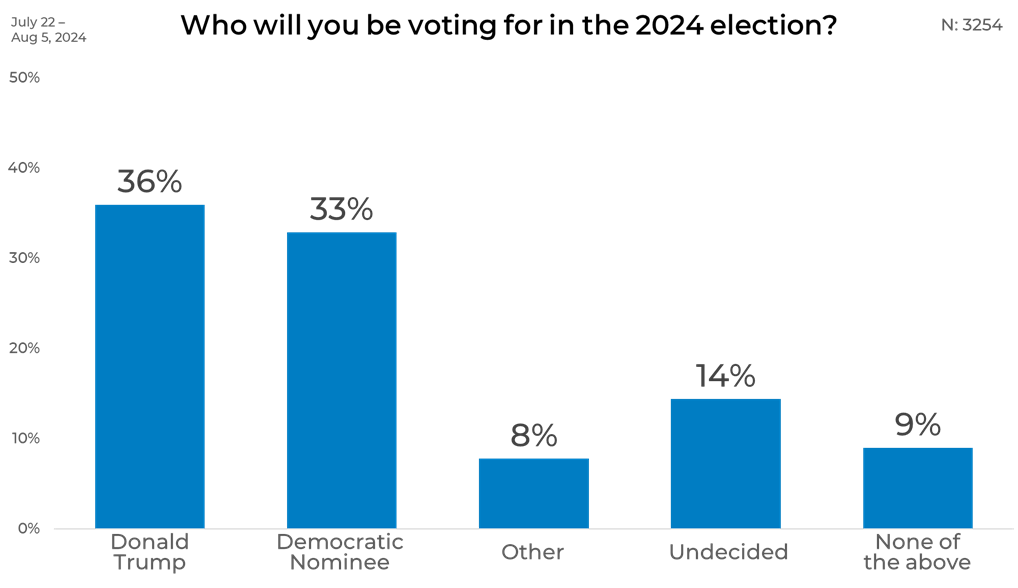
Donald Trump has stronger support among men, with 39% backing him compared to 34% of women. The Democratic nominee shows a slight lead among male voters at 34%, but drops to 32% among female voters. Women are more likely to be undecided (15%) or reject all options (11%), compared to men, where 13% are undecided and only 6% are opting for “None of the above.” These differences could play a crucial role in shaping the final outcome.
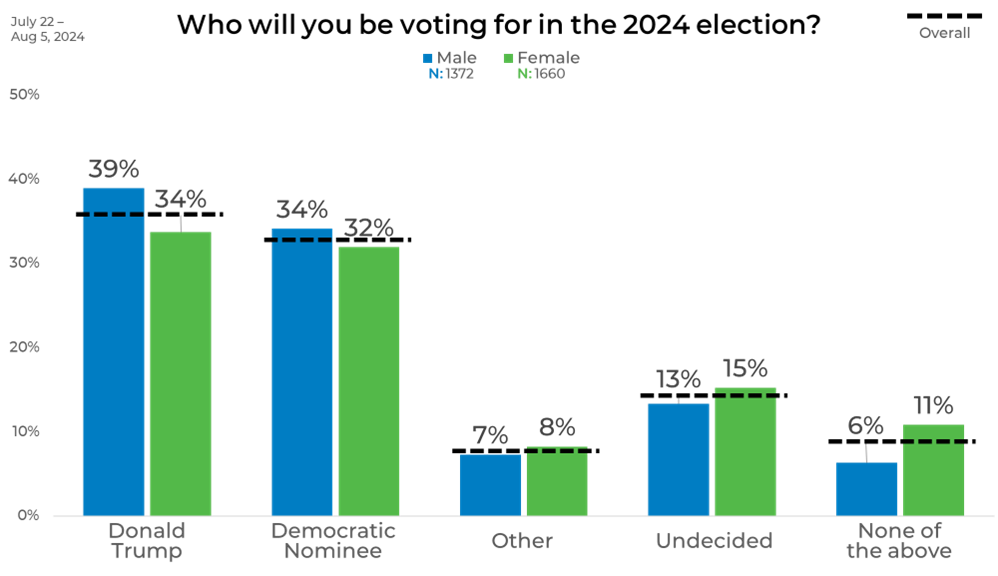
Donald Trump dominates among Republicans, securing 84% of their support, while only 7% of Democrats and 29% of Independents lean toward him. The Democratic nominee is backed by 72% of Democrats, 23% of Independents, and a mere 4% of Republicans. Independents show significant indecision, with 23% still undecided and 11% choosing “None of the above.”
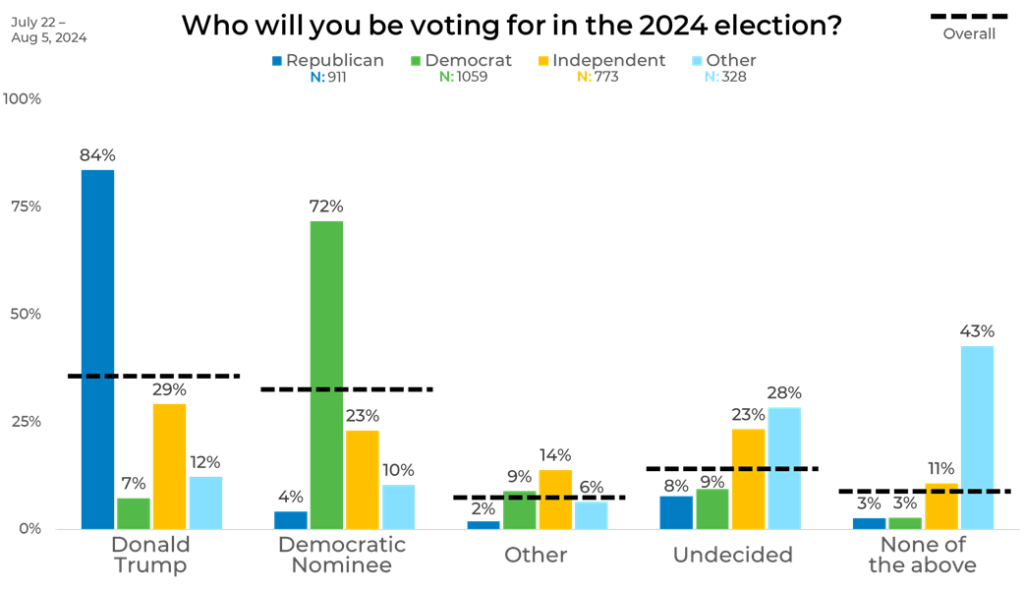
Donald Trump’s support is steady across most age groups, ranging from 34% among 18-24-year-olds to 38% among those 45 and older. The Democratic nominee sees the highest support from the 65+ group at 39%, while younger voters aged 18-34 show lower support at 31-34%. Younger voters (18-24) are the most undecided, with 19% still uncertain.
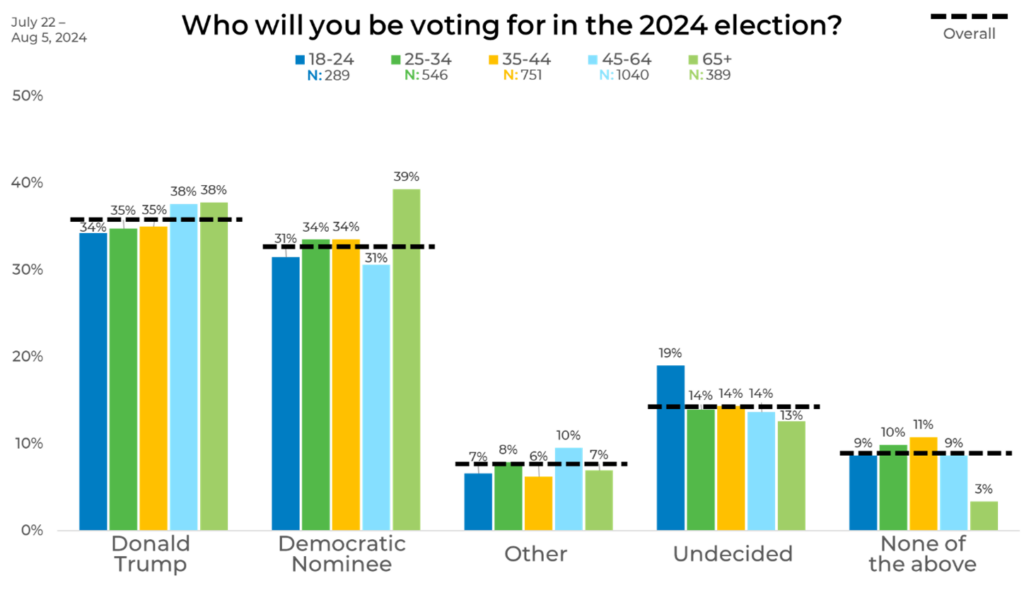
Donald Trump’s support increases with income, from 28% among those earning under $20,000 to 42% among those in the $60,000 – $99,999 range, before slightly dipping to 38% for those earning $100,000 or more. The Democratic nominee’s support also grows with income, peaking at 38% among voters earning $100,000 or more.
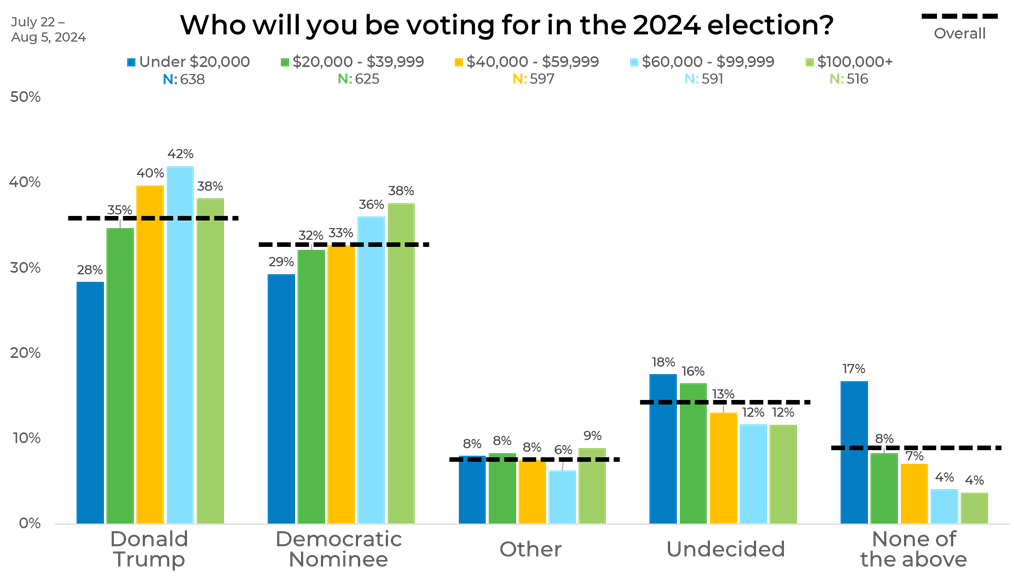
Donald Trump has the strongest support among Caucasian voters at 42%, while his backing drops significantly among African-American voters (20%) and is somewhat higher among Asian (34%) and Hispanic/Latino (30%) voters. The Democratic nominee is favored by 46% of African-American voters, with Asian and Hispanic/Latino voters showing 34% and 32% support, respectively.
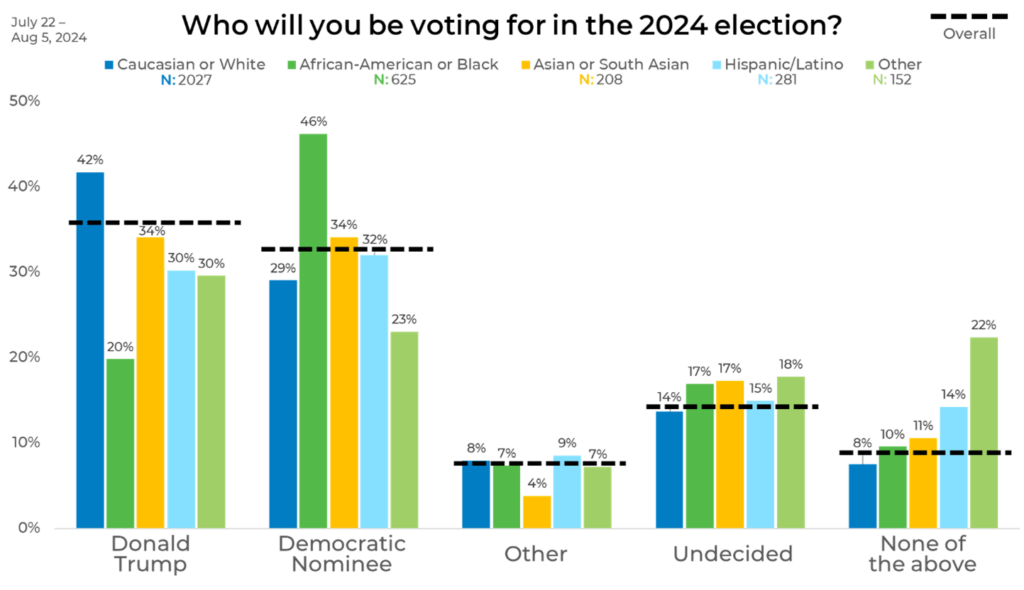
This breakdown is a visualization of the different panels intentionally selected that are utilized to deliver quality, unbiased, market research data.
Donald Trump’s support is relatively consistent, ranging from 34% in Panel N to 38% in Panels C and O. The Democratic nominee sees more variation, with the highest support in Panel N at 39% and the lowest in Panel O at just 26%.
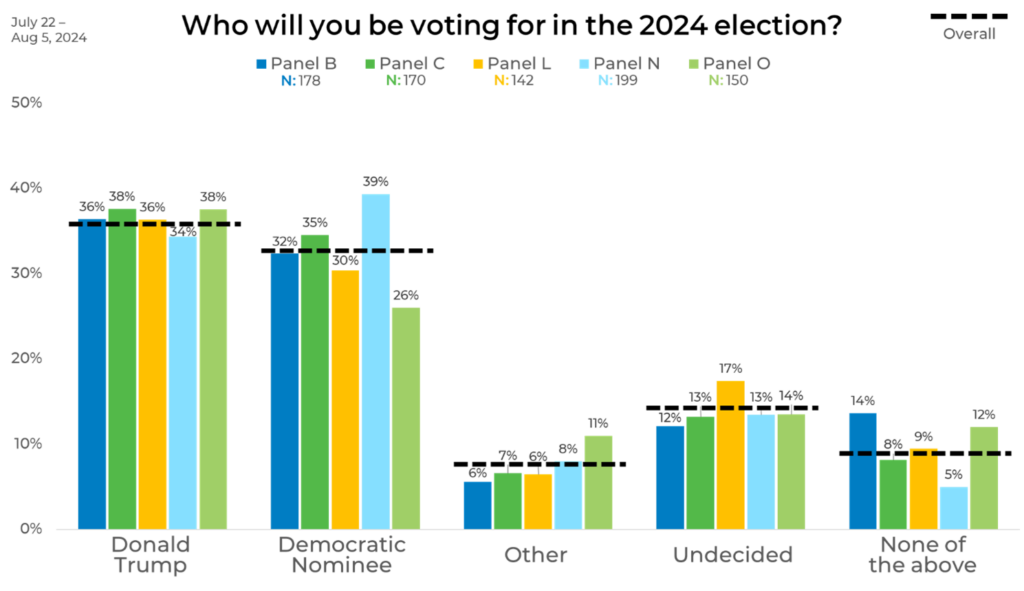
This is an excellent representation of where quality data sampling matters. At EMI, we prioritize strategically blending sample sources to balance demographics, behaviors, and attitudes to ensure that we provide the most representative and accurate data. Download The Sample Landscape: 2024 Edition to better understand how panels differ from one another and how they impact your data.